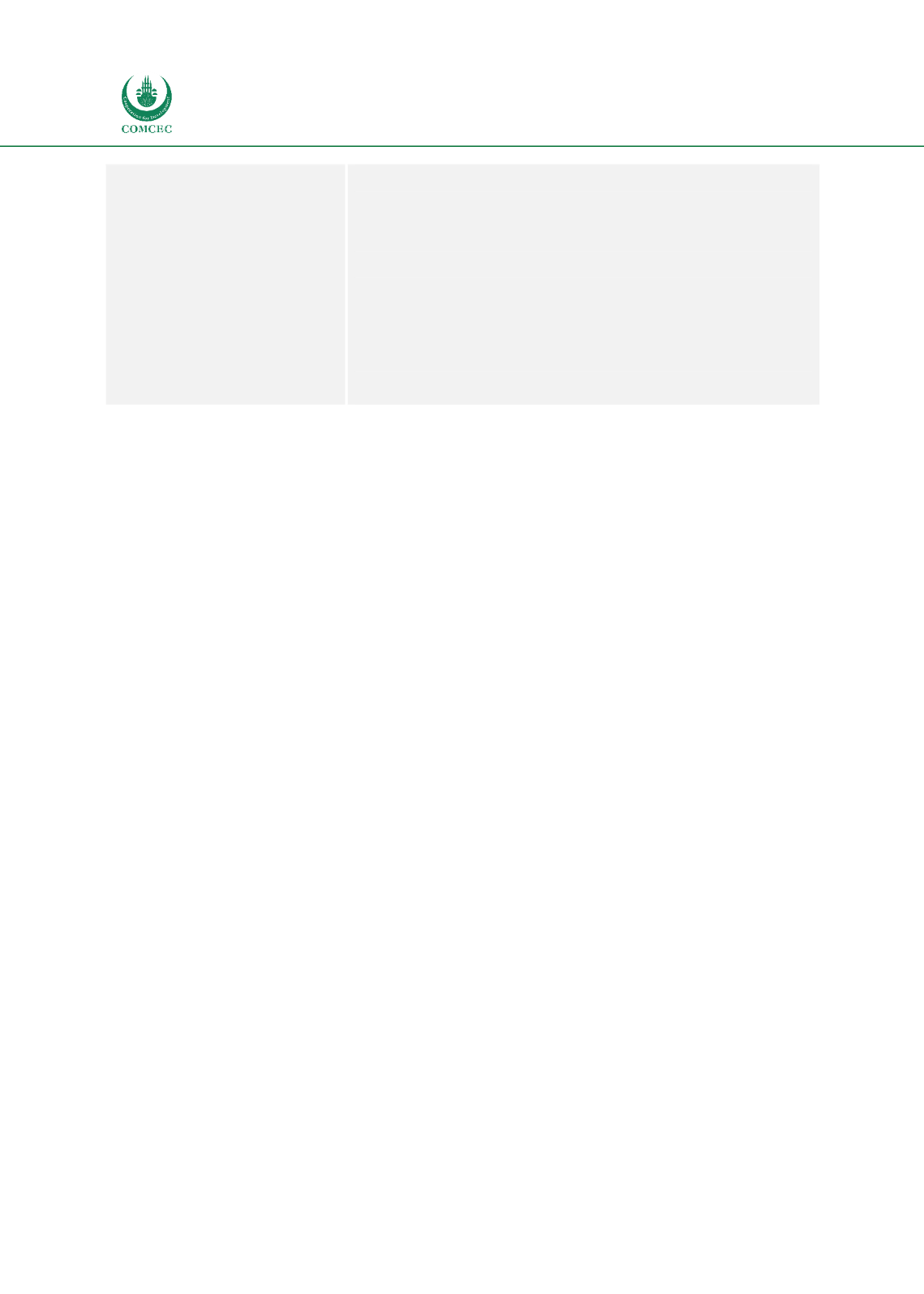

Facilitating Trade:
Improving Customs Risk Management Systems
In the OIC Member States
138
Adequate tools, equipment (non-intrusive inspection
technology) and infrastructure for the inspection and
examination of goods/means of transport;
Existence of the effective LE IT system that supports
CRM;
CRM Module embedded in CDPS;
Using integrated CRM system including DW, BI, and
data mining.
6.1.1
Legal, strategic and other mechanism supporting CRM system
Challenge 1: A legal environment that does not hold backmodern CRMs
;
The Customs Code
and the Customs Code
’
s Implementing Regulation must envisage and justify the establishment
and functionality of the CRM. OIC MS will be unable to implement an efficient CRM if there is a
lack of legal support to:
Perform risk analysis based customs controls;
Receive advance cargo information on import, export and transit shipments;
Perform post-clearance controls based on risk analysis.
Challenge 2: No proper alignment between the overall Customs Strategy and the LE and
CRM strategy;
the overall Customs Strategy is the foundation for any LE and CRM strategy. The
Customs Strategy must set clear objectives and directions for the TF, LE, and CRM. Many CAs
give insufficient attention to strategic goals and the development of an appropriate mid to long-
term LE and CRM vision. Due to the focus on revenue issues, there is no clear link between the
Customs Strategy and the LE and CRM strategies. According to the conducted research, the CRM
Policy and Strategic Governance have an essential influence on the full coverage of the CRM
cycle, the implementation of the AEO concept, the Doing Business score and the logistics
performance index. 25 OIC MS do not have a CRM Policy in place (no information available for
8 of the OIC MS). This is a significant challenge to improve overall achievements related to CRM
implementation. Additionally, in most of the cases where there is a CRM Policy, it is adapted to
the embedded CRM functionalities in the CDPS – selectivity module for risk analysis.
Challenge 3: Need of a shift of focus: from revenue collection to ensuring the security and
safety of the citizens;
CAs still play an important role in revenue collection, but the safety and
security of their citizens become increasingly more important, in particular given the increased
trends of smuggling of illicit goods. Strategic documents and their supportive action plans will
need to include performance measures that will measure the safety and security aspects. In
many cases, due to their significant revenue collection responsibilities, CAs report directly to the
Ministry of Finance. Such an arrangement frequently makes it difficult for Customs officials to
give sufficient priority to non-revenue objectives such as trade facilitation, CRM, community
protection and national security. CAs must develop Strategies and action plans with clear goals,
objectives and performance measures which reflect the wide range of responsibilities they have.
Adding performance measures related to safety and security will change the current mindset of
customs officers - now focusing only on revenue collection. In such a way the Customs will
increase the focus on balancing revenue and non-revenue strategic objectives.
















